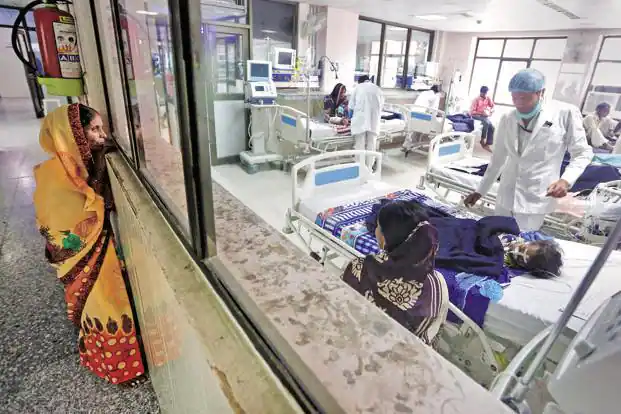Abstract
This paper examines the relationship between healthcare spending and health outcomes in India. With a population of ₹140.76 crore, a section of the population is often left deprived of basic healthcare facilities, specifically in rural areas. From out-of-pocket expenditures to highly charged medical treatment and medicines, affording quality healthcare becomes a luxury. However, in recent times, it has been observed that the healthcare schemes worked on by the government have, to a significant extent, contributed to the reduction of out-of-pocket expenditures as well as helped the underprivileged save on their expenses. Shemes like PMJAY, Jan Aushidhi, and many more are instrumental in making healthcare available for a larger population to access. However, the rural-urban divide and the quality difference in the healthcare facilities offered by the public and private sectors make it a challenge for the ordinary low-income population to access necessary healthcare facilities. The paper attempts to analyze how the issue can be tackled and how changes with the support of technology can improve health outcomes.
Introduction
Over the past few decades, India has witnessed multiple changes in its health sector with regard to healthcare spending and outcomes. This has been a result of the increased investment by public and private health entities to provide health-associated services, backed by a large array of programs and schemes that specifically aim to enhance the healthcare sector. However, to a certain extent, healthcare spending in India ceases to be sufficient to support its population. This further explains how healthcare spending and outcomes are accompanied by several factors such as demographics, income, GDP, etc. Both public-which largely comprises the Central and State governments) and private players have engaged in providing services for the health sector.
Government spending on health as a proportion of GDP experienced a sharp decline in 2018–19, the most recent financial year for which data is available, following a steady increase for 14 years starting in 2004–05. Public health expenditure for 2018-19 was 1.28 percent of the GDP, down from 1.35 percent in the previous financial year. After that, government spending on public health has seen a significant rise since the COVID pandemic struck, but it could be argued that a health emergency forced the hand of the decision-makers. Truth be told, according to data from the Union Ministry of Health, India was far from on pace to reach its goal of raising health spending to 2.5% of GDP by 2025, as outlined in the National Health Policy in 2017.
The GDP clearly shows that healthcare spending is growing far more slowly than the national economy. Approximately 3.8% of India’s GDP was spent on healthcare, according to World Bank data for the previous year. This amount was far less than the 10% of GDP that was on average spent globally on healthcare. India had considerably lesser healthcare spending when compared to certain other nations. For instance, in 2018, the United States, which has some of the highest healthcare costs in the world, spent about 16.9% of its GDP on healthcare. Compared to India, nations like Germany, France, and Canada typically devote a larger portion of their GDP to healthcare.
Click Here To Download The Paper

📌Analysis of Bills and Acts
📌 Summary of Reports from Government Agencies
📌 Analysis of Election Manifestos

